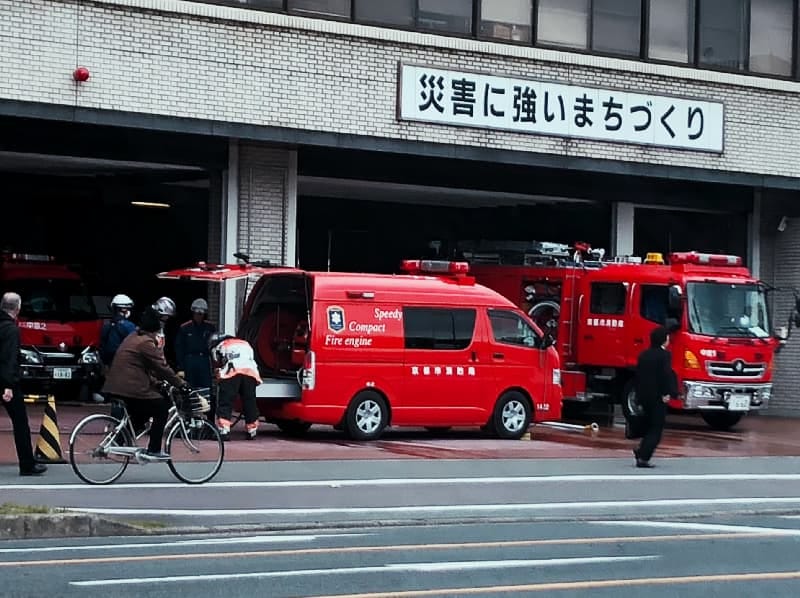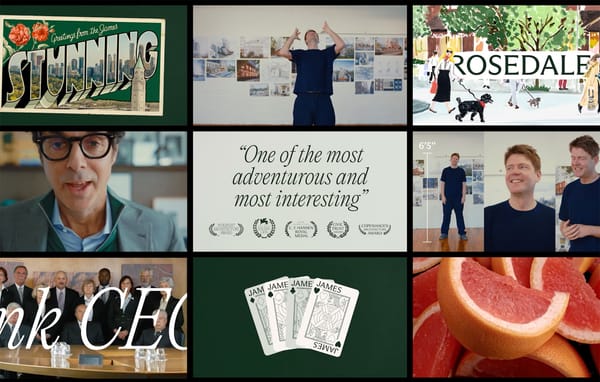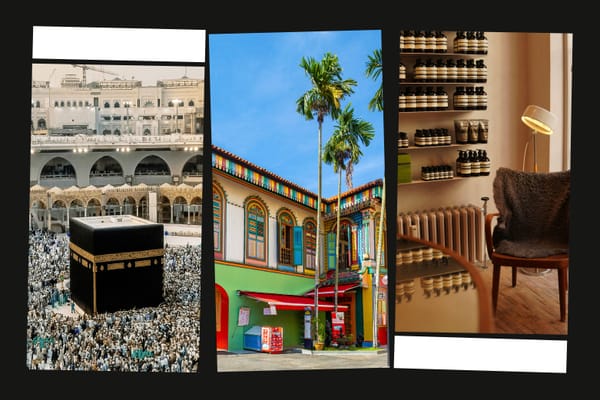Open Roads
Rethinking car use in Tokyo, Paris, and London

Hi everyone,
I live in Toronto, a city of nearly three million people, and I own a car. This is a luxury. In a good week, I’ll use my car only once or twice, leaving it parked no further than the next block for the rest of the time. That’s an even greater luxury, and one for which I pay only about $250 a year, or less than a dollar a day. Henry Grabar, author of the new book Paved Paradise (buy via Bookshop or Indigo), would argue stringently that this convenience symbolizes systemic failures.
I’m inclined to agree with him, and with Daniel Knowles, author of another new book, Carmageddon (buy via Bookshop or Indigo). Knowles’s manifesto is, as its subtitle suggests, about “how cars make life worse”—even if mine makes my life, with two young children to ferry to bike parks and soccer practice, easier. What would it take to convince people like me to give up our cars? What could city life be like if we did?
It could be like Tokyo. “Among rich cities,” Knowles writes in this excerpt, the Japanese capital “has the lowest car use in the world,” with about one car for every three households. This is despite being rebuilt after the Second World War, a period characterized by rising car dominance throughout North America and Europe. To borrow a phrase from clickbait headlines, the “one weird trick” that made this possible is that the Japanese government chose to fund infrastructure improvements by creating private companies rather than by levying taxes. Those companies took out loans to fund construction, then charged tolls to recoup their investment. No one presumed driving on Japanese highways would be free.
“From the beginning, roads did not have an unfair advantage in their competition with other forms of transport. And so in Japan, unlike in almost the entire rest of the rich world, the postwar era saw the construction of enormous amounts of rail infrastructure.” The ubiquity of high-speed inter-city railroads, suburban commuter-rail lines, and the dense tangle of the subway system gives people affordable and convenient options no matter their destinations. In Tokyo, additional regulations stipulate that, to buy a car, you have to prove you have somewhere to park it. Add all this up and, as Knowles writes, even passionate car enthusiasts end up defaulting to public transit.
But Toronto is not Tokyo, and in cities like mine there is now a lot to undo: concrete, of course, but also political subsidies, individual habits, and social expectations. It’s instructive to consider a city like Paris, where since 2014 Socialist mayor Anne Hidalgo has been speed-running the traffic-reduction game. In an excerpt from his book published in Slate, Grabar outlines her administration’s playbook: greatly expanding the number of bike lanes, subsidizing the purchase of e-bikes, blocking off streets in front of schools, and redesigning major thoroughfares. There’s more to come: “a low-emissions zone…. A total ban on gas-powered cars by 2030. A ban on through traffic in the city center…. A reduction of street parking by half. A redesign of the ring road highway.”
Hidalgo’s deputy mayor for transportation describes the campaign as a “policy of social redistribution” that gives public space back “to the categories of people who today are deprived”—by which he means everyone but affluent white men, who are the most common car owner-drivers. This redistribution is an admirable sentiment, but not one without challenges that require innovative thinking. One of Grabar’s more intriguing details involves Indigo, one of the world’s largest parking-garage owners, adapting to decreasing revenue by renting its underground locations to other companies for car-repair shops, Amazon lockers, data centers, and grocery-delivery warehouses.
Hidalgo has popularized the idea of the fifteen-minute city, in which one’s daily necessities and important services are no more than fifteen minutes’ walk away. The MonMarché grocery order, taking advantage of prime underground real estate, can now arrive that quickly. But I couldn’t help but think, as I was reading, of a social-media post that went viral this spring and is attributed to Gareth Klieber: “My hot take on ‘15-minute cities’ is if you can get to the coffee shop within fifteen minutes, but the barista who makes your drink can’t afford to live closer than a half-hour away, then you live in a theme park.” As Adam Gopnik, reviewing these two books for the New Yorker, notes, “The history of transportation will always be social history, writ large. […] How we move unites us.” To his credit, Grabar notes the challenges faced by deliverymen living in Paris’s 20th Arrondissement and beyond.
Gopnik divides his time between Paris and New York. In 2007, Michael Bloomberg, then New York’s mayor, proposed congestion pricing as part of an ambitious slate of programs and projects meant to create a greener city. The idea, which boils down to “make drivers subsidize public transit,” in critic Justin Davidson’s words, was pretty much dead on arrival. The proposal followed London’s own congestion-pricing program, which had launched in 2003. Davidson, noting that program’s twentieth anniversary, reports that today the British capital has “fewer cars (though still plenty), cleaner air, more bus passengers, and a lot more pedestrians and cyclists than it did at the turn of the century.” Importantly, he adds, “The congestion charge is now just a fact of life. Londoners complained, then they shrugged. That’s progress.”

Who wouldn’t want that? But perhaps too many anti-car advocates neglect something that Gopnik emphasizes: “We pay an enormous price for our automotive addiction … but telling the addict that the drug isn’t actually pleasurable is a losing game. […] Understanding [the] emotional infrastructure in favor of cars is vital to imagining their possible replacement.”
Indeed, the fifteen-minute city, perhaps because of its affiliation with a “socialist” French mayor, has recently become a political flashpoint in North America. It’s hard to argue with people who are riled up. But another idea that I like is that of the “15 mph city,” which comes from an argument put forth in the 1970s by social critic Ivan Illich. In an essay at Common Edge, writer John J. Parman makes the case that, “if we think of it as an average speed for movement other than simply walking, 15 mph seems reasonable in most local contexts.” The word local is key: “in cities, car use is mostly local, so speed and range are less important than cost, convenience, and ease of parking.”
Parman continues: “City streets were planned and designed for large vehicles. Efforts to make streets safer for walking and biking take this as given, but a shift in vehicular scale, reflecting today’s urban realities, would allow us to rethink the streetscape entirely.” Again, what you might end up with is something that looks like Tokyo: consider the wide range of small vehicles Dan Hill, director of the Melbourne School of Design, gathered in this 2021 survey, from logistics trolleys and mamacharis to mopeds and delivery trikes to tiny vans and mini garbage trucks.
What impresses me is the mix. It’s hard to predict what large-scale infrastructure a city will need decades from now: after all, most of the planners razing neighborhoods for highways in the 1960s were acting in good faith. So one lesson I take from this reading is that the more options we have, and the more fine-grained control we can have over the transportation mix, then the more easily we can rebalance our infrastructure as needs change.
To return to parking: in the United States, Grabar notes, more square footage is dedicated to parking each car than to housing each person. I imagine the numbers are similar here in Canada. There’s so much more to say about how this connects to issues like housing supply and affordability. But for now, I take the point that Nicholas Dagen Bloom, author of another related new book, The Great American Transit Disaster, makes in this interview: “Right now, in most American cities, it’s not aggravating enough to drive.” There are five bus routes, two subway stops, and an express train that links downtown to the airport within walking distance of my house. Given this, would I pay $500 a year for my annual parking permit? Maybe. Would I pay $750? Maybe not.
Love all ways,
Brian
🔗 (Related) Good Links
- ✳️ Sara Hendren: “Better Block understands that design gets its life from daring to commit … while also cultivating an open-handed process.”
- 🤔 Devon Zuegel: “Almost all of the best new urban fabric in the last few decades has happened south of the Mason-Dixie line.”
- 🤝🏻 Read or listen to this interview on models of urban governance with scholar Sheila Johnson, whose new book is called Co-Cities
- 🇳🇴 Via Brent Toderian, an English-language version of Oslo’s Street Design Report (PDF link)
- 🇪🇺 Via Sentiers, an interesting and emoji-filled post on trends in European cities’ mobility mix





